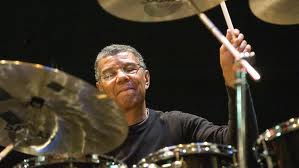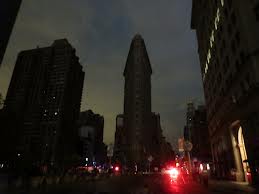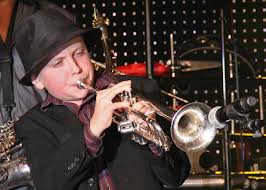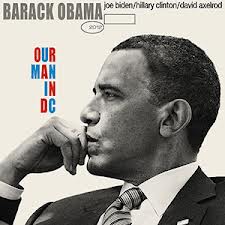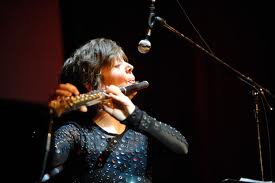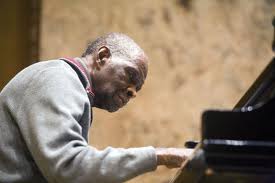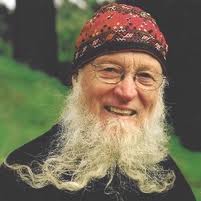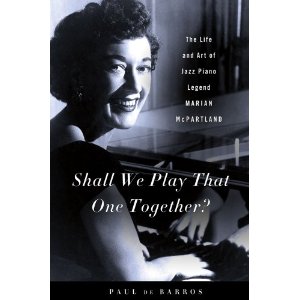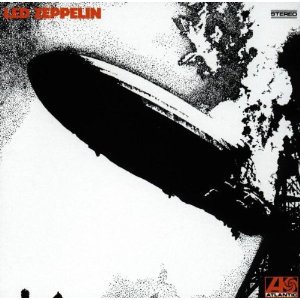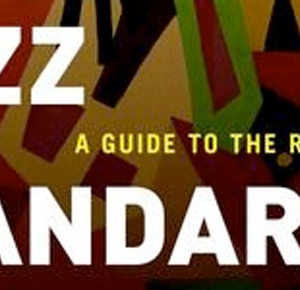Drummer/composer/pianist Jack DeJohnette, an NEA Jazz Master, is the sole jazz-associated artist among 54 fellows selected by United States Artists (not a governmental organization) from 438 applications to a grants program initiated by United States Artists in 2006. USA fellows received $50,000 in unrestricted funds. Citing “cutting-edge thinkers and traditional practitioners from the fields of architecture […]
Found in Heidelberg: Transatlantic jazz connections
The Enjoy Jazz Festival in south-western Germany two weeks ago culminated in an unexpected celebration of jazz’s deep traditions, led by formidable saxophonist Archie Shepp and serene reeds explorer Yusef Lateef. It was a fitting end, also, for an international symposium titled “Lost in Diversity: A Transatlantic Dialogue on the Social Relevance of Jazz,” held at […]
Critics, scholars, musicians @ Enjoy Jazz Fest, Lost in Diversity conference
International jazz journalists, academic scholars, presenters and musicians rarely meet together, but that’s the plan for the “Lost in Diversity” conference during the 14th Enjoy Jazz Fest, which I’m attending tomorrow (Nov 7) through Sunday in Heidelberg, Germany. Curated by ethnomusicologist and sociologist Dr. Christian Broecking of the Heidelberg Center of American Studies in the Ruprecht-Karls-Universität (oldest in Germany, founded 1386), this is […]
NYC jazz this weekend, post-Sandy
A lot of jazz joints are “dives” — in basements — but since Hurricane Sandy it’s not flood waters keeping cellars like the Village Vanguard, the Jazz Standard, Fat Cat, 55 Bar (Sat: open with candlelight), Cornelia Street Café and Smalls closed. There’s simply no electricity. So they, like every other music venue below 26th St. […]
We’ve got rhythm: Masters meet prodigies @ Jazz Foundation Loft Party
NEA Jazz Masters pianist Randy Weston and alto saxophonist Lou Donaldson, both 86, played the same room as two astonishing 12-old prodigies — trumpeter Geoffrey Gallante and organist Matthew Whitaker (see their video clips, below) — at the Jazz Foundation of America‘s annual benefit Loft Party Saturday night  (Oct 27),. It proved again that America’s improvised, vernacular art form appeals to […]
There is nothing like a blog (the freelancer’s recourse)
I’ve been a freelance writer for almost 40 years and it hasn’t gotten easier, but I’m glad to have this blog. Why? is the question to be addressed at the JJA’s webinar “Blogging: Tales from Veterans” by Pamela Espeland (Bebopified), Willard Jenkins (The Independent Ear) and Marc Myers (JazzWax), which I’ll moderate, on Tuesday Oct. […]
Jazzers for Obama in NYC tonight
The Jazz for Obama talent pool fundraising for the re-election of the President at Symphony Space  (2537 Broadway, NYC) tonight is stellar. Roy Haynes, Joe Lovano, Brad Mehldau, Ron Carter, Jimmy Heath, McCoy Tyner, Kenny Barron, Jim Hall, Dee Dee Bridgewater, Ravi Coltrane, Arturo O’Farrill, Kenny Garrett, Geri Allen, Jeff ‘Tain” Watts, Christian McBride, Gretchen Partlato, Claudio […]
MacArthur ignores jazz musicians and improvisers
The new list of MacArthur fellows, just released, features not one musician from the world of jazz among the 23 distinguished Americans who will receive $100,000 a year for five years. Two musicians are named among the fellows: Claire Chase, flutist and founder of the International Contemporary Ensemble (ICE) and Chris Thile, mandolinist of Nickle Creek and […]
Muhal Richard Abrams: Outsiders’ Insider, Insiders’ Outsider
Hear keyboardist-composer Muhal Richard Abrams play solo and leading a drummerless quartet tonight, 9/21/2012, at 8 pm at the Community Church or New York (40 E. 35th, between Madison and Park Ave.). It’s the first concert of the season produced by the AACM (Association for the Advancement of Creative Musicians), the 47-year-old organization which he co-founded […]
Terry Riley and son Gyan improvise, as does the Joshua Light Show
I didn’t know Terry Riley could perform A Rainbow in Curved Air live, as he did last Friday with his guitarist son Gyan at the Skirbal Center for the Performing Arts on NYU’s campus, as part of an appearance by the Joshua Light Show. But yes he can, and masterfully — as if he just thought it […]
What does it take to write a jazz biography?
“Writing Jazz Biographies” is the third free, interactive webinar, scheduled for Wednesday, Sept. 19 at 8 pm. edt, presented by the Jazz Journalists Association. Paul de Barros (Shall We Play That One Together? The Life and Art of Piano Legend Marian McPartland), Robin D.G. Kelley (Thelonious Monk: The LIfe and Times of an American Original), […]
Kennedy Center honors over-the-top US and UK bluesmen
Chicago bluesman Buddy Guy, at age 75 as wild a guitar pyrotechnician as lives today, and the British dinosaur rockers Led Zeppelin, whose guitarist Jimmy Page stands in Guy’s shadow, are being celebrated with Kennedy Center Honors, to be presented at a program at the Kennedy Center on Dec. 2. Remind me again why we’re […]
Demise — er, downsizing — of an New York City arts review
Low ad revenue for CityArts-New York has brought an end to the twice-monthly column on jazz and related music I’ve written since its first issue in March 2009. Indeed, CityArts, originally trumpeted as “New York’s review of culture” Â and under film critic Armond White’s editorship heralded as “Bringing thinking back to the arts,” has been […]

